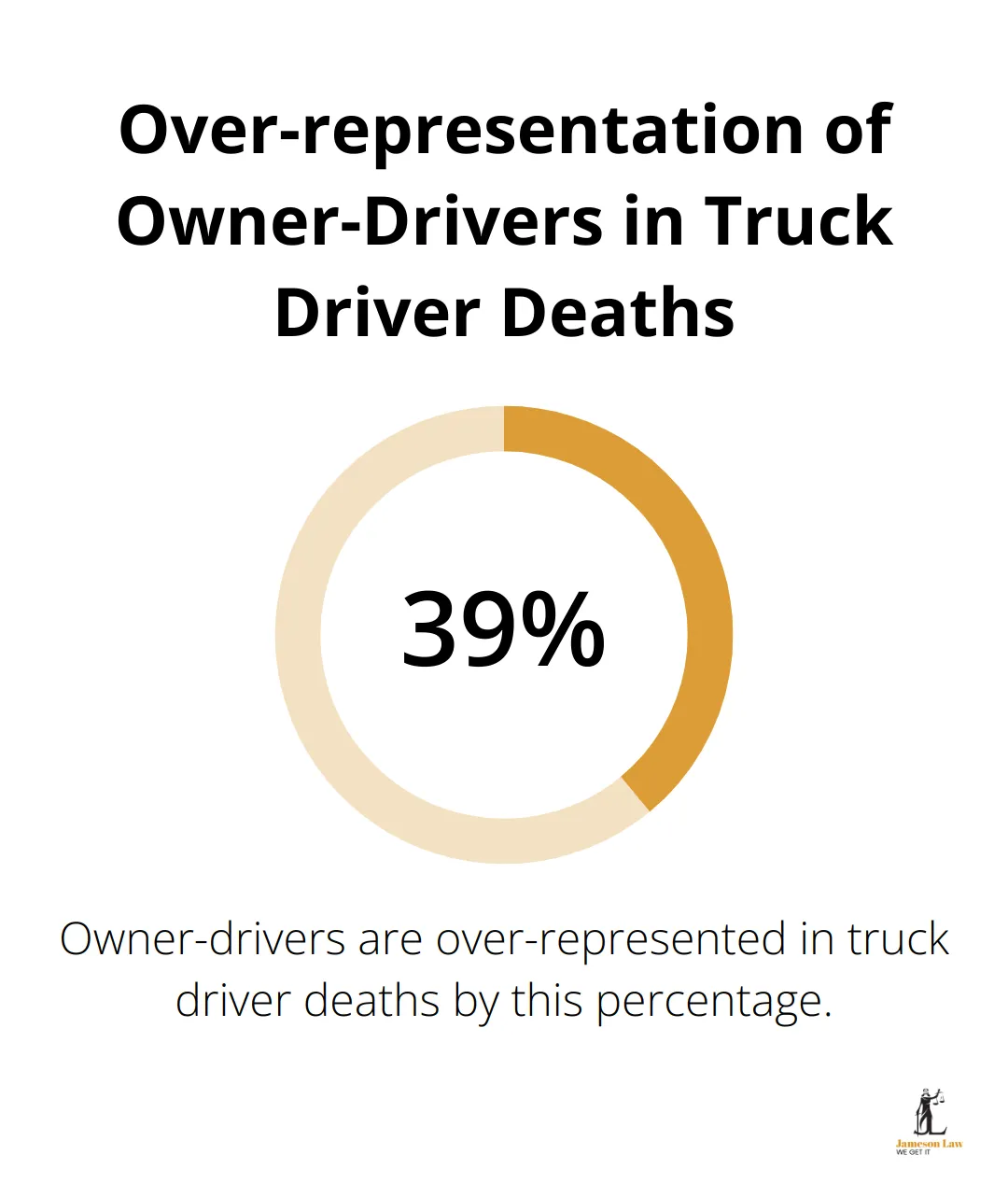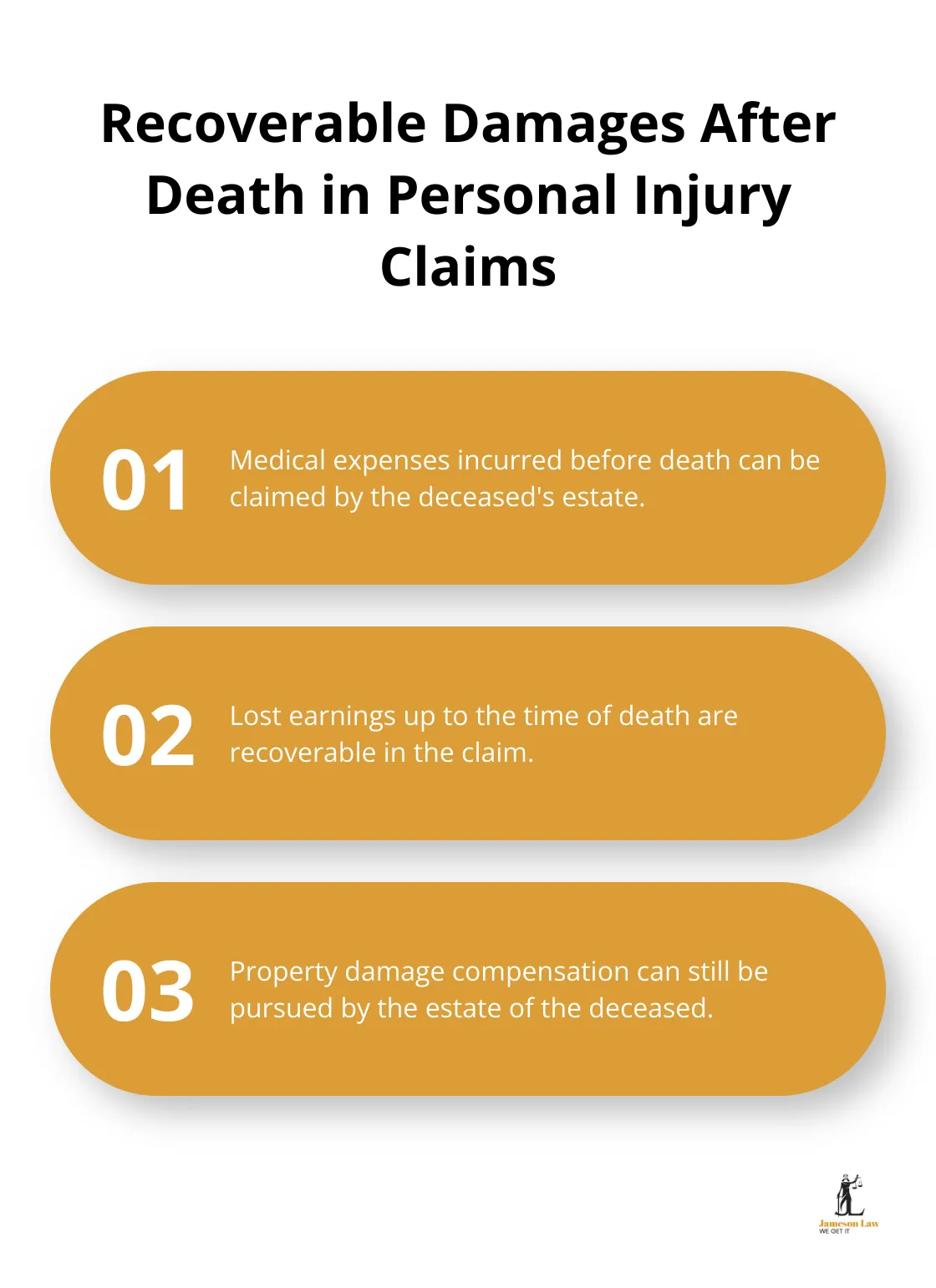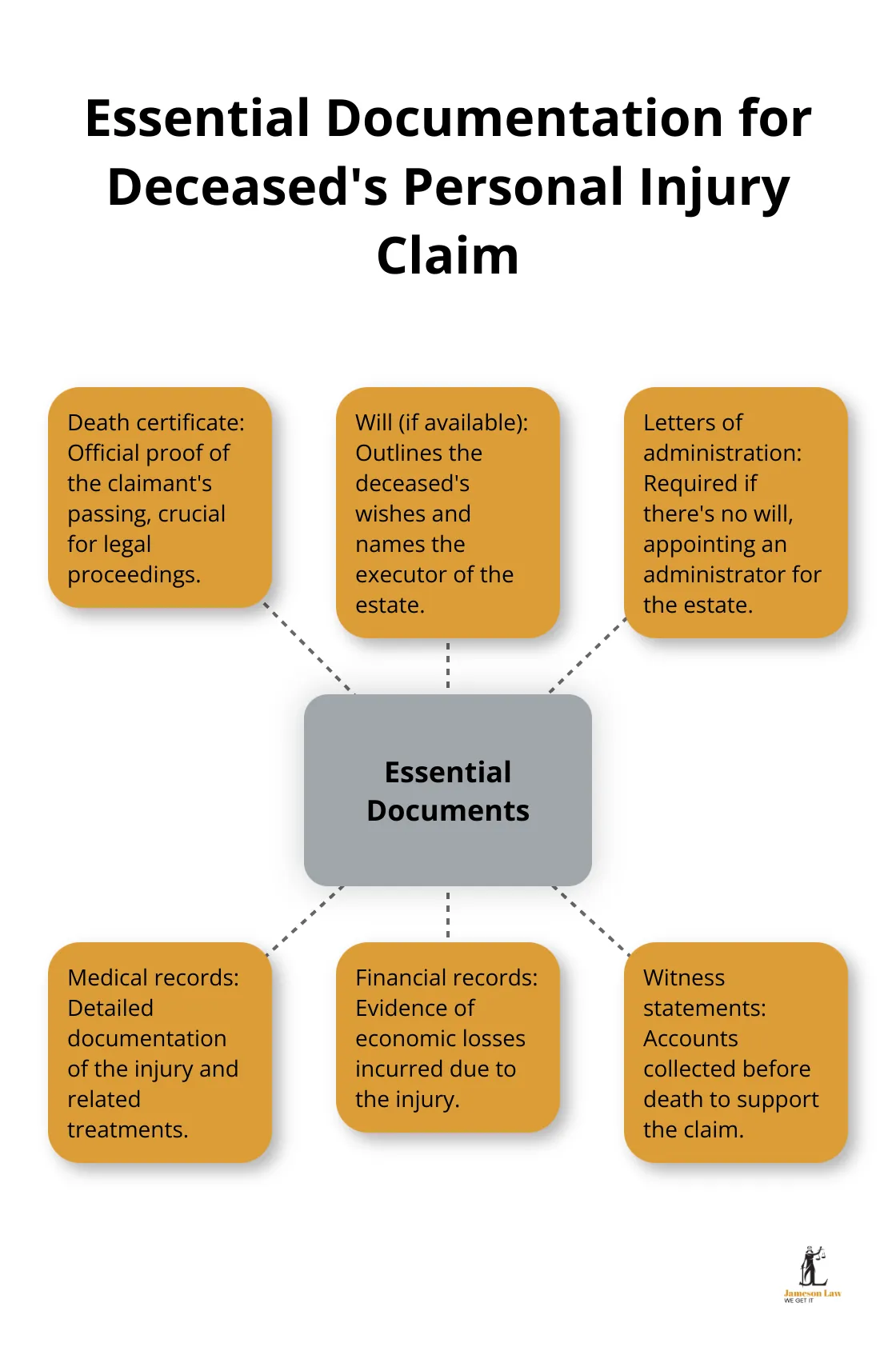Personal injury claims can be complex, and the question “Does a personal injury claim survive death?” adds another layer of intricacy.
At Jameson Law, we often encounter cases where a claimant passes away before their lawsuit is resolved.
This blog post will explore how death impacts personal injury claims in Australia, specifically in New South Wales, and outline the legal processes involved in pursuing a deceased’s claim.
What Are Personal Injury Claims in Australia?
Definition and Purpose
Personal injury claims in Australia are legal actions individuals take when they suffer harm due to someone else’s negligence or wrongful conduct. These claims seek to compensate the injured party for their losses, which may include medical expenses, lost wages, and pain and suffering.
Types of Personal Injury Cases
Australia sees a variety of personal injury cases. Motor vehicle accidents top the list, with owner-drivers being over-represented in truck driver deaths by 39%. Workplace injuries also occur frequently, with 183 worker fatalities reported in 2019 due to work-related activities. Other common types include:
- Public liability cases
- Medical negligence
- Product liability claims

Time Limits for Claims in NSW
The Limitation Act 1969 sets specific time limits for filing personal injury claims in New South Wales. Claimants typically have three years from the date of injury (or discovery of injury) to initiate legal proceedings. However, this timeframe can vary based on the claim’s nature.
For instance, in medical negligence cases, the clock starts ticking from the date of negligence discovery, which might occur later than the actual incident. It’s noteworthy that for minors, the time limit usually doesn’t commence until they turn 18.
The Urgency of Quick Action
While these time limits might appear generous, waiting can jeopardise your claim. Early action allows for better evidence collection and increases the chances of a successful outcome. Memories fade, witnesses become harder to locate, and crucial documents may disappear over time.
Furthermore, some injuries might not seem serious initially but can worsen as time passes. Starting the claims process early ensures that all potential impacts of the injury receive consideration in your claim.
Navigating the Claims Process
The personal injury claims process in Australia can be complex (especially for those unfamiliar with legal procedures). It typically involves:
- Gathering evidence
- Assessing damages
- Negotiating with insurance companies
- Potentially going to court
Given these complexities, many Australians choose to seek professional legal assistance. Experienced lawyers (such as those at Jameson Law) can guide claimants through each step, ensuring they understand their rights and options throughout the process.
As we move forward, it’s important to consider how death might impact these claims. Let’s explore the survival of action laws in NSW and how they affect ongoing personal injury cases.
What Happens to Personal Injury Claims After Death?
Survival of Action Laws in NSW
The Law Reform (Miscellaneous Provisions) Act 1944 allows personal injury claims in NSW to continue after a claimant’s death. This means the deceased’s estate can pursue legal action on their behalf. However, the process becomes more complex, and the types of recoverable damages change.
Changes in Recoverable Damages
After a claimant’s death, the claim focuses primarily on economic losses. The estate can still seek compensation for:
- Medical expenses incurred before death
- Lost earnings up to the time of death
- Property damage
Damages for pain and suffering, loss of enjoyment of life, and future economic losses are generally not recoverable. The estate cannot claim damages for lost earning capacity past the date of death (that is, during the “lost years”) and exemplary or punitive damages.

Time Constraints and Legal Representation
The death of a claimant doesn’t extend the statute of limitations for filing a claim. In fact, it can make the process more urgent. A compensation claim needs to be made within 6 months of the date of injury. In some circumstances, a claim can be made up to 3 years later. The legal personal representative of the estate must act quickly to ensure all necessary documentation is gathered and filed within the prescribed time limits.
Challenges in Evidence Collection
One of the biggest challenges in pursuing a personal injury claim after death is the loss of the claimant’s testimony. This can significantly impact the strength of the case (especially in situations where the claimant’s account of events was key).
To address this, it’s vital to gather as much evidence as possible while the claimant is still alive. This might include:
- Detailed medical records
- Witness statements
- Any documentation related to the incident that caused the injury
Differences in Claims Filed Before and After Death
Claims filed before death generally have a stronger foundation, as they often include the claimant’s own testimony and ongoing medical assessments. These claims can continue with the estate stepping in as the plaintiff.
Claims filed after death face additional hurdles. The estate must prove that the deceased had a valid claim at the time of their death and that the death was not caused by the negligence in question. This often requires more extensive investigation and expert testimony.
Navigating these post-death claims requires a delicate balance of legal expertise and compassionate client care. Families need to understand their rights and the potential outcomes of pursuing a claim in these difficult circumstances. The next section will explore who can continue the claim on behalf of the deceased and what documentation is required to do so.
Navigating the Legal Process After Death
Who Can Continue the Claim?
In NSW, the legal personal representative (LPR) of the deceased can continue or initiate a personal injury claim. The LPR is typically the executor named in the will or an administrator appointed by the court if there’s no will. This person acts on behalf of the deceased’s estate, representing the interests of the beneficiaries.
The appointment of an LPR should occur promptly. Any delays can put the claim at risk, especially if the statute of limitations approaches. If there’s no will, the Supreme Court of NSW can appoint an administrator, but this process takes time.
Essential Documentation and Evidence
The pursuit of a deceased’s claim requires thorough documentation. Key items include:
- Death certificate
- Will (if available)
- Letters of administration (if no will)
- Medical records related to the injury
- Financial records showing economic losses
- Witness statements collected before death

The collection of this evidence can be challenging (especially if the death was unexpected). Families should start collecting documents as soon as possible. Legal professionals can assist in obtaining necessary records and statements to build a strong case.
Time Constraints for Filing
Time limits for personal injury claims remain unchanged after death. In NSW, most claims must be filed within three years of the injury date. However, some cases have shorter timeframes. For example, motor vehicle accident claims must be reported within six months.
The death of a claimant can complicate matters, especially if it occurs close to the filing deadline. Courts may grant extensions in some cases, but this isn’t guaranteed. Families should seek legal counsel immediately to ensure all deadlines are met.
Swift action also preserves evidence. Memories fade, witnesses become harder to locate, and documents may be lost over time. Quick action increases the chances of a successful claim.
Legal Guidance and Support
The navigation of a personal injury claim after death presents challenges, but it’s not impossible. Expert legal guidance allows families to pursue the compensation their loved one deserved. Legal professionals can support families through this process, ensuring their rights are protected and their loved one’s claim is handled with care and professionalism. Understanding estate planning can also be crucial in these situations, as it helps ensure that the deceased’s wishes are respected and their assets are properly managed.
Final Thoughts
Personal injury claims become more complex when a claimant dies before case resolution. The survival of these claims after death depends on quick action and thorough documentation. Families must appoint a legal representative, gather evidence, and meet filing deadlines promptly to preserve the right to claim.
Time constraints play a critical role in these cases. The statute of limitations doesn’t pause for death, making swift legal action essential. Collecting vital evidence before it’s lost and memories fade strengthens the case, especially when the claimant’s testimony is no longer available.
Expert legal guidance proves invaluable when navigating the intricacies of a personal injury claim after death. Jameson Law can provide the support and expertise needed to pursue compensation for your loved one. Our team works tirelessly to achieve the best possible outcome for families facing this challenging situation.













